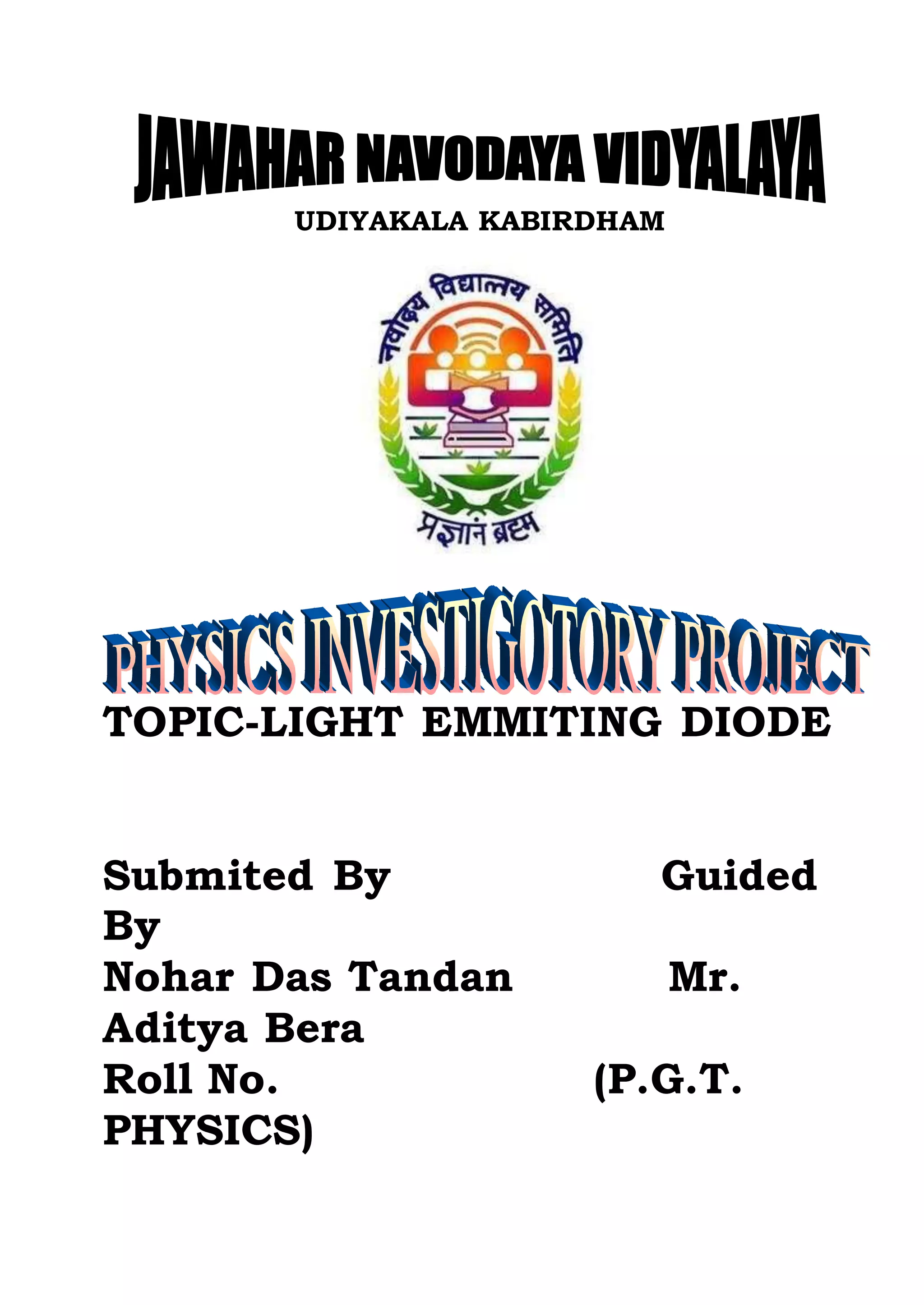This document is a student project on light emitting diodes (LEDs) submitted to fulfill a school assignment. It includes an introduction to LEDs, their types, working principles, characteristics, structures, advantages, disadvantages, and applications. The student expresses gratitude to their teacher and principal for providing guidance and the opportunity to do the project. Certification is provided that the student completed the project according to the syllabus.
















